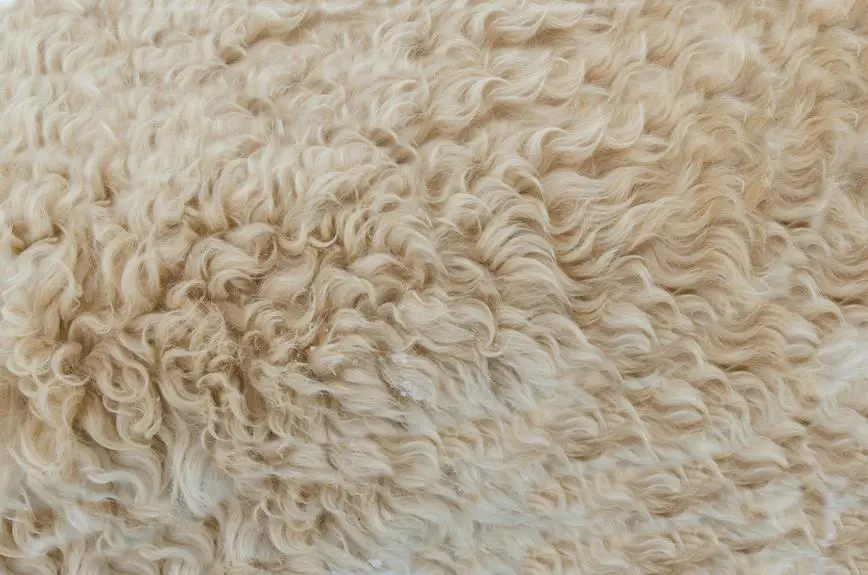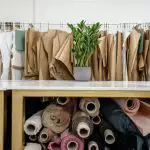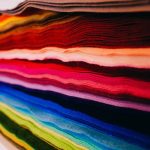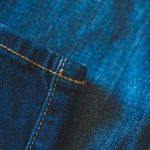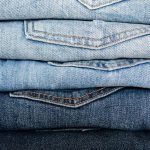When you think about broadcloth, you might picture a smooth, versatile fabric, but the journey to that final product is intricate. It starts by selecting the right fibers, whether it's cotton, polyester, or silk. After that, those fibers undergo a series of essential processes, each playing a pivotal role in achieving the desired quality. But the real magic happens during weaving and finishing, where techniques and treatments come together to create the fabric you know. What happens next in this meticulous process might surprise you.
Table of Contents
Selecting the Right Fibers
When choosing fibers for broadcloth, you'll want to consider both the desired texture and durability. Broadcloth is known for its smooth finish and tight weave, so selecting the right fibers is crucial.
Cotton is a popular choice due to its softness, breathability, and strength. You'll benefit from its ability to absorb moisture, making it comfortable to wear in various climates.
Another option is polyester, which offers excellent durability and resistance to wrinkles. It's often blended with cotton to enhance the fabric's overall performance while retaining a soft feel.
If you're aiming for a luxurious finish, silk might be the way to go, though it's less durable and requires more careful handling.
Additionally, consider blends of fibers, like cotton-polyester, to achieve the perfect balance of texture, durability, and cost-effectiveness. Each fiber has its unique properties, and understanding these will help you make an informed decision.
Ultimately, the choice of fibers will impact not only the look and feel of your broadcloth but also its longevity and ease of care. So take your time, weigh your options, and find the right combination that suits your needs.
Preparing the Fibers
Preparing the fibers for broadcloth involves cleansing, carding, and spinning to ensure a high-quality fabric.
First, you'll want to cleanse the fibers thoroughly. This process removes any dirt, grease, or impurities that can affect the final product. If you're working with cotton, for example, you might use water and detergents specifically designed for that purpose.
Next, you'll move on to carding. During this step, you'll separate and align the fibers, transforming them into a fluffy, untangled mass. This is crucial because it helps prepare the fibers for spinning by ensuring they're uniform in texture and length. You can use a carding machine or hand carders, depending on the scale of your operation.
Once the fibers are carded, they need to be gathered into slivers, which are long strands of fiber. This step is essential as it sets the stage for the next phase, where you'll convert these slivers into yarn.
Spinning the Yarn
Spinning the yarn transforms your slivers into long, continuous strands, ready for weaving into broadcloth. You start this process by feeding the prepared slivers into a spinning wheel or spindle, where they're twisted together. This twisting action not only unites the fibers but also adds strength and elasticity to the yarn.
As you spin, you can control the thickness of the yarn. If you want a finer yarn, you pull the fibers more tightly, while a thicker yarn requires a looser grip. You'll need to watch the tension carefully; too much can cause breakage, while too little can lead to uneven strands.
Once you achieve the desired thickness, you wind the spun yarn onto a bobbin or spool. This allows for easy storage and further handling. After you've spun enough yarn, you might also consider setting it by rinsing it in warm water. This step helps to lock in the twist, ensuring your yarn maintains its shape during the weaving process.
In this way, you create a strong, consistent yarn that provides the foundation for high-quality broadcloth. Your attention to detail during spinning is crucial for the overall fabric quality.
Weaving Techniques
With your strong, consistent yarn ready, you can now explore various weaving techniques to create broadcloth. The most common method is plain weave, where the yarns interlace in a simple over-and-under pattern. This technique provides durability and a smooth surface, perfect for broadcloth's intended use.
Another technique you might consider is twill weaving. This method creates a diagonal pattern, adding texture and depth to the fabric. It's often used in heavier broadcloths, giving them a unique character while maintaining strength.
Jacquard weaving is another option worth exploring. This technique allows for intricate designs and patterns, making your broadcloth stand out. It requires specialized equipment but offers endless possibilities for creativity.
You can also experiment with a combination of these techniques, blending plain, twill, and Jacquard weaves to achieve a distinctive look.
As you weave, pay close attention to tension and alignment; these factors are crucial for ensuring a high-quality finish. By mastering these techniques, you'll be well on your way to producing beautiful, functional broadcloth that showcases your skills and creativity.
Finishing Processes
After weaving your broadcloth, several finishing processes enhance its appearance and functionality. These steps not only improve the texture but also prepare the fabric for its final use. You might start with washing to remove any oils or impurities, ensuring a clean slate for the subsequent treatments. Next, you'll typically apply a treatment to soften the fabric, making it more pleasant against the skin.
Here's a quick overview of common finishing processes:
| Process | Purpose | Result |
|---|---|---|
| Washing | Removes impurities | Clean fabric |
| Softening | Enhances texture | Soft, smooth feel |
| Pressing | Eliminates wrinkles | Neat, crisp appearance |
Quality Control Measures
When it comes to ensuring the quality of broadcloth, fabric inspection techniques play a crucial role.
You'll want to pay attention to how testing for durability can reveal the fabric's longevity and performance.
Let's explore these essential quality control measures in more detail.
Fabric Inspection Techniques
Inspecting fabric is crucial to ensure that every piece of broadcloth meets quality standards before it reaches the market. You'll want to start by visually examining the fabric for any defects, such as snags, stains, or uneven dyeing. This initial inspection helps you catch obvious issues early in the process.
Next, you should utilize various tools and techniques for a more thorough assessment. For instance, using a light box can help you spot flaws that might be missed under standard lighting. You can also employ magnifying glasses to examine the weave and texture closely. Another effective technique is the 4-point inspection system, where you assign points to defects based on their severity. This method helps you quantify issues and make informed decisions about whether to accept or reject the fabric.
Don't forget to check the fabric's width and length against specifications, ensuring consistency in production. Keeping a checklist can help you stay organized and ensure you don't overlook any crucial elements during your inspection.
Testing for Durability
To ensure broadcloth holds up under everyday use, testing for durability is essential in the quality control process. Manufacturers employ a variety of methods to assess how well the fabric withstands wear and tear. You'll often see tests involving abrasion, where samples are rubbed against a standardized surface to simulate daily friction. The results help determine the fabric's longevity.
Next, tensile strength tests come into play. Here, samples are pulled until they break, allowing manufacturers to measure how much force the broadcloth can endure. This information is critical for ensuring that garments made from the fabric won't tear easily under stress.
In addition to physical tests, you should also consider colorfastness testing. This checks how well the dyes hold up against washing, sunlight, and other environmental factors. It ensures that your broadcloth garments stay vibrant over time.
Lastly, after all tests are completed, the results are analyzed to make any necessary adjustments in the manufacturing process. By implementing these rigorous testing methods, manufacturers guarantee that only the best broadcloth reaches your hands, providing you with durable and reliable fabric for your needs.
Frequently Asked Questions
What Are the Historical Origins of Broadcloth?
You might find that broadcloth originated in medieval Europe, primarily in England. It was initially made from wool, prized for its smooth texture and durability, and gained popularity for making garments among the affluent classes.
How Does Broadcloth Compare to Other Fabrics?
When you compare broadcloth to other fabrics, you'll notice it's smoother, denser, and more durable. Unlike lighter fabrics like poplin, broadcloth offers a sturdier feel, making it ideal for tailored clothing and formal wear.
Can Broadcloth Be Made From Sustainable Materials?
Yes, you can make broadcloth from sustainable materials like organic cotton or recycled polyester. These alternatives help reduce environmental impact while maintaining the fabric's desirable qualities, making it a great choice for eco-conscious consumers.
What Are Common Uses for Broadcloth Today?
You'll find broadcloth used in various applications today, including dress shirts, blouses, tablecloths, and home decor. Its smooth texture and durability make it a popular choice for both casual and formal garments and furnishings.
How Should Broadcloth Be Cared For?
To care for broadcloth, you should machine wash it in cold water on a gentle cycle. Avoid bleach and tumble dry on low. Iron on a medium setting to keep it looking crisp and fresh.
- Tetron Fabric for Marine Applications: Durability and Use Cases - June 18, 2025
- Tetron Fabric for Outdoor Furniture: Weather Resistance and Care - June 18, 2025
- Tetron Fabric for Wall Coverings: Style and Application Tips - June 18, 2025

